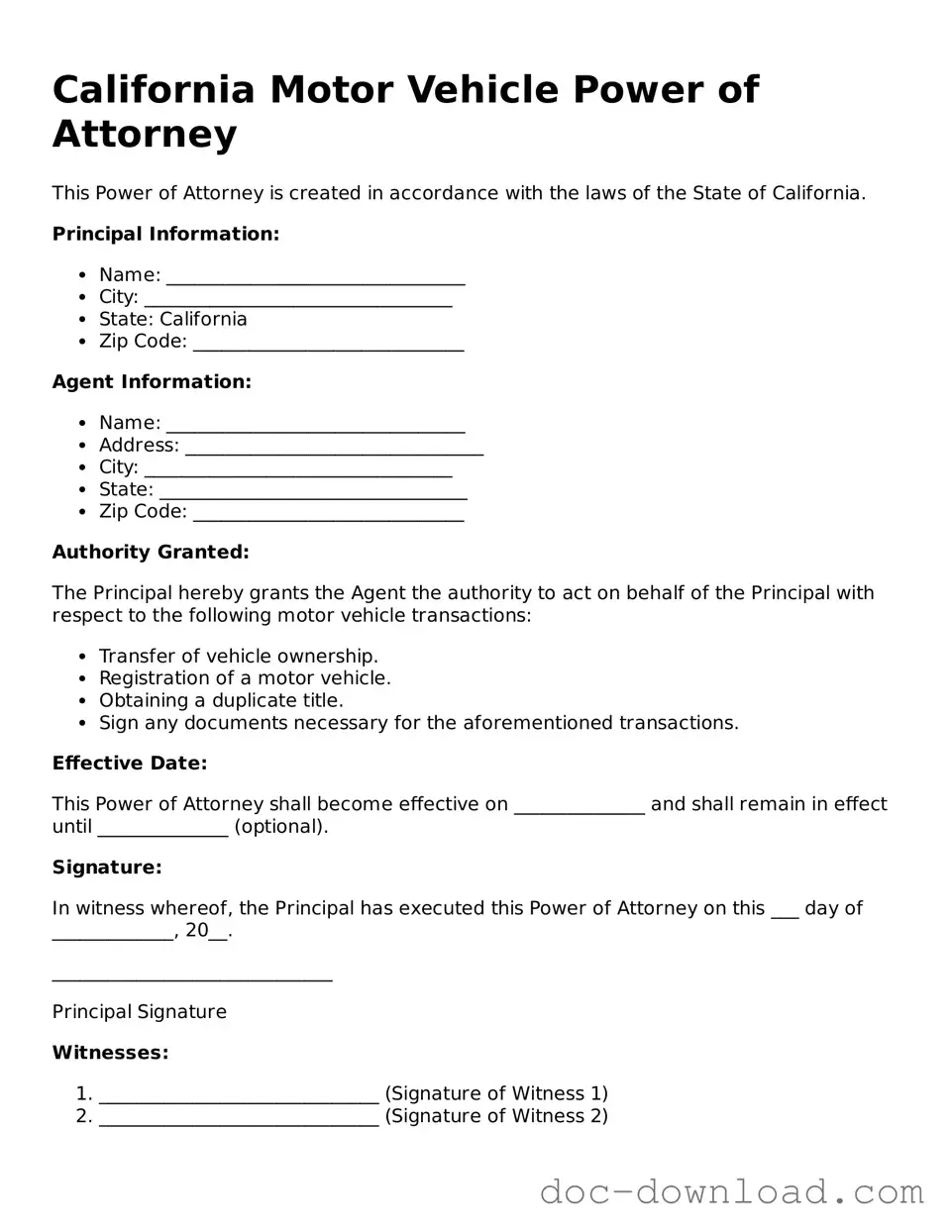The California Vehicle Bill of Sale serves as a document that transfers ownership of a vehicle from one party to another. Similar to the Motor Vehicle Power of Attorney form, it requires the signatures of both the seller and buyer. This document provides crucial information about the vehicle, including the vehicle identification number (VIN), make, model, and year. Both forms are essential in the vehicle transaction process, ensuring that the transfer is legally recognized and that the seller is no longer liable for the vehicle after the sale.
The Vehicle Registration Application is another document related to vehicle ownership. When a vehicle is bought or sold, the new owner must register the vehicle in their name. This application is similar to the Power of Attorney form in that it often requires the seller’s information and sometimes their signature to confirm the transfer of ownership. Both documents play a key role in the legal documentation of vehicle ownership, facilitating the transition from one owner to another.
In navigating the complexities of legal documents in California, understanding tools such as the California Judicial Council form is crucial, as highlighted by resources like californiapdffoms.com, which offer guidance on proper completion and usage of these forms to ensure they meet court requirements effectively.
A Title Transfer form is also closely related to the California Motor Vehicle Power of Attorney form. This document is specifically used to officially change the title of the vehicle from the seller to the buyer. Like the Power of Attorney, it requires signatures and may include details such as the sale price and date of transfer. Both documents ensure that the new owner has clear legal title to the vehicle, preventing disputes over ownership in the future.
The Release of Liability form is another important document that shares similarities with the Motor Vehicle Power of Attorney. This form notifies the Department of Motor Vehicles (DMV) that the seller has sold the vehicle and is no longer responsible for it. While the Power of Attorney allows another person to act on behalf of the owner, the Release of Liability protects the seller from any future liabilities associated with the vehicle. Both documents are crucial in safeguarding the interests of the parties involved in the transaction.
The California Smog Certification is also relevant in the context of vehicle transactions. This document certifies that the vehicle meets state emissions standards. Similar to the Power of Attorney form, it is often required during the sale process. Both documents facilitate a smoother transaction by ensuring compliance with state regulations. The smog certification can be a prerequisite for the registration process, just as the Power of Attorney enables someone to handle the registration on behalf of the owner.
Lastly, the Odometer Disclosure Statement is a document that must be provided during the sale of a vehicle. It records the vehicle's mileage at the time of sale, which is important for both legal and financial reasons. This form is similar to the Motor Vehicle Power of Attorney in that it is used to protect both the buyer and seller by providing accurate information about the vehicle. Both documents contribute to the transparency of the transaction, helping to prevent fraud and ensuring that the buyer is fully informed about the vehicle’s condition.
